#5 Poems of Forests and Woodlands
Explore tagged Tumblr posts
Text
5 Poems of Forests and Woodlands
By James G. Piatt A Woodland Scene “And it’s there walking in the high woods that I could wish to be, and the men that were boys when I was a boy walking along with me.” Hilaire Belloc Sounds of ancient forest whispersmoving like lost dreams across my mind, sang to me as I wanderedalong an ancient woodland path.The misty dawn arriving with a soft melodic pulse aroused long-forgotten…
#5 Poems of Forests and Woodlands#academy of the heart and mind#academyoftheheartandmind#An Ancient Path#Mediter au Sujet de la Vie#Poem#poems#poet#Poetry#The Old Deer Trail#Woodlands and Forests
0 notes
Text
Hazel Folklore
Corylus americana

Ruled by ☿
⸙༄𓆤𓆩𓆪❁𓇢𓆸🏵
Contents:
Overview
Folklore
Uses in Witchcraft
Safety Notes
Conclusion
⸙༄𓆤𓆩𓆪❁𓇢𓆸🏵
Overview
Hazel grows to 20 ft tall and has slightly hairy, serrated heart-shaped leaves that are 5 inches long and alternate on the branch. It flowers April through May, with male and female on the same shrub. The female flower is scaly and greenish. Catkins grow in late fall. The nut, called a filbert, is smooth and brown encased in a sticky green and pokey bracts of the flower which need to be removed with gloves. It ripens in late fall, falling off the shrub in late September and October. It should be dried thoroughly. The bark is light gray and smooth.
This plant grows in thickets shaded on woodland edges, not minding different soil types. It can be found in ornamental landscaping as well as natural wilds. It can be propagated by planting saplings along mixed hardwood forests and encouraged for future growth.
⸙༄𓆤𓆩𓆪❁𓇢𓆸🏵
Folklore

-Salmon of Knowledge-
The Boyhood Deeds of Fionn, an Irish myth, speaks of an ordinary salmon that made it's home in the well of wisdom. Surrounding the well were hazel trees that dropped nuts into it, where the salmon would eat them. Through this act the salmon gained the worlds knowledge. Whoever ate this salmon would have this knowledge transferred to them. A poet named Finn caught the fish and gave it to his servant boy, Fionn, to cook. Hot fat landed on Fionn's thumb, which he sucked for the pain and the knowledge of the salmon went to Fionn instead of Finn.

-Kat Godeu-
One of the lines from this Welsh poem about a battle of trees says "Hazel adjudged the weapon for conflict."

-Cinderella-
In one of the pre-Disney versions of Cinderella, the young girl protects her mother's grave by placing a hazel stick on top.

-Water Witching-
I'm trying to keep this more folklore stories based however, I felt it would be a crime to leave out that hazel is what was originally used for water witching (aka dowsing).
⸙༄𓆤𓆩𓆪❁𓇢𓆸🏵
Uses in Witchcraft
Here we see that hazel is mostly known for bestowing knowledge; directly through the nut, by twitching of a rod while looking for metals or water, divination for the correct tool. There's also a lean towards the protection of sacred spaces, such as family graves. This tree can easily be used to help bolster divination practices in a myriad of ways. Seek this knowledge by eating a hazel nut before bed to gain wisdom in dreams or work with the wood itself as a dowsing rod, pendulum or carving for runes or ogham. Maybe these would be ways in which speaking with the dead may become easier for others.
⸙༄𓆤𓆩𓆪❁𓇢𓆸🏵
Safety Notes
No known issues at this time.
⸙༄𓆤𓆩𓆪❁𓇢𓆸🏵
Conclusion
What are some ways in which you have used hazel in your own practice? What are the stories you've heard related to hazel? Are there any ideas you have for hazel that you would like to try? Let us know! Let's have a conversation!
References:
Midwest Foraging by Lisa M. Rose
Images:
Title image made in Canva
Justin McCarthy - Irish Literature, Vol. 8
Kat Godeu - (The Battle of the Trees) by Mark Wigan on Twitter
Cinderella by Carl Offterdinger
Dowsing for metal ore, from 1556 "De re metallica libri XII" book
5 notes
·
View notes
Text
Lines Written in Oregon
Vladimir Nabokov
Esmeralda! now we rest
Here, in the bewitched and blest
Mountain forests of the West.
Here the very air is stranger.
Damzel, anchoret, and ranger
Share the woodland’s dream and danger
And to think I deemed you dead!
(In a dungeon, it was said;
Tortured, strangled); but instead –
Blue birds from the bluest fable,
Bear and hare in coats of sable,
Peacock moth on picnic table.
Huddled roadsigns softly speak
Of Lake Merlin, Castle Creek,
And (obliterated) Peak.
Do you recognize that clover?
Dandelions, l’or du pauvre?
(Europe, nonetheless, is over).
Up the turf, along the burn
Latin lilies climb and turn
Into Gothic fir and fern.
Cornfields have befouled the prairies
But these canyons laugh! And there is
Still the forest with its fairies.
And I rest where I awoke
In the sea shade – l’ombre glauque –
Of a legendary oak;
Where the woods get ever dimmer,
Where the Phantom Orchids glimmer –
Esmeralda, immer, immer.
Annotations
Title. In Oregon. VN rented an apartment in Mount Ashland in the summer of 1953, where he wrote Lolita and hunted butterflies in the local woods.
1. Esmeralda. A butterfly or moth. Several species of moth or butterfly share the species name esmeralda/-us, or are commonly called “emerald”, but it seems clear to me that this is a mythical green butterfly that reminds Nabokov of one he found during his boyhood. Cf Speak Memory, Ch. 6, in which a butterfly flew (in VN’s imagination) from Russia to North America, “and southward along the Rocky Mountains- to be finally overtaken and captured, after a forty-year race, on an immigrant dandelion under an endemic aspen near Boulder.” “Esmeralda” recalls Victor Hugo’s gypsy, Lucette, called "our Esmeralda and mermaid" in Ada, Esmeralda and Her Parandrus from Look at the Harlequins, and Gerald Emerald from Pale Fire.
3. … West. Cf LATH, Part 4.1 on rediscovering Russian landscapes in the Rocky Mountains: “I spent what remained of the summer exploring the incredibly lyrical Rocky Mountain states, getting drunk on whiffs of Oriental Russia in the sagebrush zone and on the North Russian fragrances so faithfully reproduced above timberline by certain small bogs along trickles of sky between the snowbank and the orchid.”
5. Damzel, anchoret. Damzel, Cf The Blessed Damozel by Dante Gabriel Rossetti. An anchoret is a religious recluse.
11. coats of sable. Other examples of heraldic language in Nabokov include the obvious Bend, Sinister; in Pale Fire, the crest of King Charles and the multiple appearances of a “heraldic butterfly, volant in arrière, sable, a bend gules”; Nabokov’s family crest in Speak Memory; The Blazon, a poem from Poems and Problems, in which: “I adopted the blazon of exile: on a field of sable a starry sword.”
12. Peacock moth. The Great Peacock Moth Saturnia pyri is the largest moth in Europe.
17. L’or du pauvre. French, poor man’s gold.
20-21. Latin lilies… Gothic fir. Metonyms for the southern France and Russia of VN’s youth, respectively. Lilies are the symbol of France. Cf VN’s poem Provence, a Russian poet in a French setting: “What bliss it is, in this world full of song,/ to brush against the chalk of walls, what bliss/ to be a Russian poet lost among/ cicadas trilling with a Latin lisp.” Also parallels the European languages used herein, ie French and German. Russian is notable in its absence.
26. L’ombre glauque. French, pale green shade.
29. Phantom Orchid. Endemic to the Pacific Northwest, the Phantom Orchid Cephalanthera austiniae is a species of orchid whose entire body is white.
30. Immer, immer. German, always.
5 notes
·
View notes
Text
beginnings
I want to start at the root of things, which for me often means a poem.
I first read "the killing of the trees" in the fall of 2020. I had just started my MFA program (not in poetry but in nonfiction, my primary genre) when a classmate introduced me to the work of a poet I did not then know.
Lucille Clifton was her name. And imagine my surprise at discovering that she had lived and worked and taught in my home state of Maryland for years – had in fact been our state's poet laureate for a spell (1979-1985). Maryland is not what I would call a literary state. California has Joan Didion, Florida has Karen Russell, Ohio has Toni Morrison, New York has Baldwin and Wharton and Fitzgerald and too many others to count.
And Maryland has – well, just a few names. Edgar Allan Poe, Rachel Carson, Ta-Nehisi Coates. I had read their work (Poe's and Coates's, that is; I still need to acquaint myself with Carson) and enjoyed it, but I never felt "Maryland"-ness in it, if that makes sense. Poe's work was too antique and fantastical, and Coates's was rooted in Baltimore, which Maryland treats more like a tumor than the vital organ it actually is.
After learning of Clifton's poetry, I devoured every volume I could find, including quilting, the collection in which "the killing of the trees" appears. This was when I realized Clifton's unique connection to Southern Maryland, the part of the state where I'm from, a place I had never seen depicted in literature of any sort. Finding her poem felt like catching a glimpse of myself in the mirror. Who is that? Oh, I realized. It's me. Us.
Anyway, the poem is a knife-sharp dissection of one of our region's main industries: subdivision-building. Not exactly a Romantic subject, but one in which Clifton nevertheless finds meaning. The poem reminds me of my own childhood growing up in Hughesville on a road named after my father's family, a road that used to belong to the farm that my great-great-grandfather had purchased sometime in the early 20th century. Its original shape contained hundreds of acres on either side of the road. But over time it had been chopped up into housing plots for family members, which later sold to people of no relation to us. Still, several of us live on the road: 5 or 6 holdout households on the southern side, all sharing power tools and sugar and muscle as needed.
One winter break home from college, I noticed the tree line in our backyard had suddenly thinned. Through the bare branches I could make out the frames of future homes. Big homes, two or three times the size of ours, in a freshly paved cul-de-sac. The sense was that the subdivisions had circled us. We had always known they were out there: metastasizing, unseen. Now, though, we felt surrounded. Trapped.
It was a feeling shared by many old guard Southern Marylanders, people whose families had lived here for multiple generations. The place was becoming too crowded, too busy, too dense. Logic dictated that this was a good thing: more people arriving meant our home was an attractive place to live, with good jobs and good schools to draw in talented workers. But for long-time locals who were dealing with more traffic, bigger class sizes, and constant construction, the compliment fell flat amidst disruption.
I share this grumpiness, but I also remain skeptical of its origins. Many of the newcomers to our area were Black, Latino, and Asian; many (most) of the curmudgeons like myself were white. I find Clifton’s poem useful for examining where my grievances with our region’s growth begin. Like the speaker in Clifton’s poem, I cringe to watch more woodland forest be cleared for another cookie-cutter development. And yet, the speaker and I can both see our own role in that destructive pattern. Just because we came here earlier doesn’t make us any less complicit. Long-time Southern Marylanders can feel the urge to proclaim: We were here first. But were we?
——————————
the killing of the trees by lucille clifton the third went down with a sound almost like flaking, a soft swish as the left leaves fluttered themselves and died. three of them, four, then five stiffening in the snow as if this hill were Wounded Knee as if the slim feathered branches were bonnets of war as if the pale man seated high in the bulldozer nest his blonde mustache ice-matted was Pahuska come again but stronger now, his long hair wild and unrelenting. remember the photograph, the old warrior, his stiffened arm raised as if in blessing, his frozen eyes open, his bark skin brown and not so much wrinkled as circled with age, and the snow everywhere still falling, covering his one good leg. remember his name was Spotted Tail or Hump or Red Cloud or Geronimo or none of these or all of these. he was a chief. he was a tree falling the way a chief falls, straight, eyes open, arms reaching for his mother ground. so i have come to live among the men who kill the trees, a subdivision, new, in southern Maryland. I have brought my witness eye with me and my two wild hands, the left one sister to the fists, pushing the bulldozer against the old oak, the angry right, brown and hard and spotted as bark. we come in peace, but this morning ponies circle what is left of life and whales and continents and children and ozone and trees huddle in a camp weeping outside my window and i can see it all with that one good eye.
——————————
further reading:
A great essay by Emily Jorgenson about Lucille Clifton's feminist ecopoetics: https://scalar.usc.edu/works/engl205-07h-fall-2017/panel-2-person-2
A video of Lucille Clifton reading "the killing of the trees" at the College of Southern Maryland in 1990: https://youtu.be/Vba8o-7xhU0
#poetry#lucille clifton#clifton#poem#literature#writing#maryland#southern maryland#somd#poets#modern poetry
4 notes
·
View notes
Text
But day doth dissolving
A cinquain sequence
1
But day doth dissolving into your large blows, and some time, if ever to remove: o no!
2
His maxims, which insphere the spur inspir’d and water their white yowes. The sun, that doth thee!
3
By cold stuff, live chattels, mincers of earliest birds; nor rising sun on this forest thief!
4
Had labour. All that I loue not wrong and learned troupe. Yet so different voice? The cause of both.
5
Of roses as she laugh and here I but all are laid on each side bowed on her bosom heave.
6
Like to make the Ithacensian suitors in old tale. It comes a cloud: for among the land.
7
We seven that night and died; and mixt with men. Lava river go all in a bliss to die.
8
I think of you! The fiery splintered in, there the fisherman’s boy, Kill him no cure me.
9
Hear the immortal in a forbidden or formalities are only pegs; and, saying.
10
Woodland great ends: ourselves as hands and water shall not far away; I hate’ to me you found?
11
Had come— so sure I? It gave brighter days hence, or Fate uncertain gloom, and serenades.
12
You are young. The faces there grey seniors question of ours! Who, who admire, would understand.
13
Rich they brought a bedde of each dwelling youth, a witless minutes of the wind! Our animals.
14
Stared with face across the children slow suns. The First Intellectual eunuch Castlereagh?
15
I snap the drill but from me was John. To Sorrow, called love, calling down into human kiss!
16
Their doom, that time I tied this. Own dear, turns out the Russian storax from the abuse of wrong.
17
—Then hey, for a taper, bowed my heaven seem best? The lists were dead, forgot much, Cynara!
18
Cupid in shamefull coupe. White as stone. At cold he picked the place, a body of body.
19
Of gold, and wine: or for bridal-gift a scourge of it. For these are the early morning meal?
20
And yet, like slang. While the fix’d foot, makes me end where smouldered peace she cries, Forsooth, let go!
21
Therefore the sharpe showres. Taking Schmacksmith, ’ a village of Absál set it awhile, thou art.
22
The king locked at noon texting forth abroad in the rest, our houses, light, from dirt, out of rules.
23
That since, and I grow cold. That lute and plain and is never will say what comes into itself.
24
Into Bagdad came a postscript and every coppice- feathered like a blow! Scowl on, ye fates!
25
I bless you turned,—and so he within us. Nobody wears even to eternity.
26
Be thy love. Fleet I was cursing hour’s supporting now. So he inwardly, and heaven’s will.
27
These ladies’ eyes and taught it was; and there in the sails? I am food on the things aspire.
28
Having through the eagles. By such a meek surrender; your bowled an answer to other end.
29
A caring the blind mans marke, weening its worthiest till he wasn’t true. Der music we know.
30
Sing terms, but the teeth and though compasse weightye prise, and the height. And making little more than war.
31
Then Gama turned away.— Me—the present poem— of—I know too well I claim from right out.
32
In this very talents of his body? Said he, and make us all were invaded, sdeath!
33
But she’s mine! Spring doth remove the passion puls’d its watery disk caught up into love.
34
And kiss, I woke it was beheaded. All mine Oten reedes beneath the small ill or no.
35
Still forget all is stifled. Up the woman as short in your heart. The place, a body sways.
36
Doth loath a lowly dying abroad. They lost they so formed be, according to Jove aloud.
37
Him in that will or no. Marriage-tomb, the sound of beauty and ten women with bloosming Buds.
38
And Southern morn. Alone, in clubs, of all dreaming evil, I have now to paint out ioy, thought!
39
So that sweeps through the air. To hint at least not tame the cherye was a most fitt ne brest of that?
40
Sharp like trees, a little birds, how calm and watch, would mounts The Throne. Had he left your own child-bed.
41
It is not stir his eyes to waste, where the fierceness. Presumptuous though cast together.
42
And my room where ever fell his foolish maid! ’Er the greenery which there foreign churches.
43
And used to and friend that often did rest his heart. Beyond thin are very scorn of our sport!
44
Your second skin. ’ Said Ida; let us kiss upon his Lips, The Sage behold Apollo!
45
That on the sun hotter than you’d breaks white should he adore a sultan? Now Mars, nostrils blood.
46
Which i have laid my hair were severe chilled albatross’s white echo of clamorings and fear!
47
What were drowned with the breach. To the vitriol madness floods, unfettered word their unsuccess.
48
In case mercy come, with all health confide. Sooner or later I the sward was turned away.
49
With implacable sweet thing wind, when thus man-girdled her too, ’ said Ida; home! Whose bugle?
50
Call country ants to have my body sways. Watch out for feare of those prophecies, o Sorrow!
51
’En out. Each with loyal obeysaunce, heaping vp waues of hys foe. Say that awoke the earth.
52
Should do much hold, nor bent, as with children! Some act of loving an inspired, snail- paced lives.
53
Ah, woe is me! A waterman came to slope, and sucking up to bless you turned her alone!
54
And gives th’ executor to be. Now Ben had sailed a score of names of fashionable.
55
Shine here those. A woman but a shame that is pleasant valley of my life had fled away!
56
Shall I say?—Again repeated, as he slumber. With tilt and thought I could not dare look, quite.
57
Said he, Let others glory. I will forget your bloodshot eyes, the cradle of thy death crown!
58
And if we love often tried Valkyrian hymns, or infection. Lady, for a day, oppress’d?
59
Will drink potions of the faint flush her but I? And when we combat for ane an’ twenty, Tam!
60
No stream came of love had breath. Fixed the turf outsprang direction, as roll the full-crown’d in cream?
61
Think thy thoughts, sold cheap what is gone not that music in a forbidding thy native hell. Of.
62
How shall be a hymning up the towsing and kiss, I dare not for mine. The loss: the patron.
63
Sooner or later in the first who bore it like a nurse. And my grief; though so vast my life!
64
Or curious wits, seeing it, and man’s names, pulling the animals. ’What need to strike him.
65
Of yesterday, the sink. ’ That one would be parting from Heavens, and to toy with holiday.
66
Then I ’d follow him! Particulate; where no great pass: I think, soft and friends for the shoes.
67
Her playmates of Hell shall at once again—again after the sea. Do not love is it not.
68
Turn my fashion’d all the slant in one sees her hidden fawn. Summer long; and heave tumult fell.
69
Not he: his hopes undone. Of the dark land, well continent, Adam, from you begin your curls.
70
Nelly Gray! The crunch of icy grass underground thereof, that weld the truth by. Pen, for one?
71
—Say what could not well be life and clear; and when Old Love put forth his life. I bring ye love: quest.
72
Come they hunt with Time begins among the state perplexing! For six hours and bring ye love: quest.
73
Let’s content vs in thee, as that somewhere! Where didst thou mayst return in happy youth—Love!
74
No great Augustus long have I said, I have been her kind. His plump white farmhouse understand!
75
That ’s understand. How shall she have the unbroken state, straight and day, when there are the house.
76
Stole that dealt with you, was all. Who had small lights of winter when well deserve of Phoebus’ lips?
77
With fair guests, if so you ready, o mount and made the Meaning in the pavement lay carved stars.
78
Already with prudes for all this way: don Juan, who were slick-faced. Come hither, lady fair.
79
After his packe, all gather’d horses, thou sit amid our regions are at all! You are free!
80
Joy … the lost lamb at her! When thou hast stay’d still we hear a trumpets from the father’s apron.
81
Ending against the temple be destructing, dear man, I think it soon was of fond foolerie.
82
Of cold and him: but let the lists were ready. Like hawks round there I unswear, that dead weight tress.
83
—First of all. Lo, the valley, no, not that the tenor of the gentle clouds do blot the seer.
84
Follow, that sparkling sounds that I knew, I knew. Old passion rooted from high to kill ye.
85
Gude news I’ve to this, I might call me call; and complain. And like ravellers journey is done.
86
Call country or its station: but they meant; for spite of doom. My mother’s, and your sweet saying.
87
Now Ben he was there we our slender prise. Till flesh and his goddesses of the tubes and tide.
88
A heat, but honeying with dumbe eloquence. I stood and sallying terms, but missed: we seem a nest.
89
But lo! At that whereon follower of their sad fate proposed by the clouds do blot the heart!
#poetry#automatically generated text#Patrick Mooney#Markov chains#Markov chain length: 7#199 texts#cinquain sequence
0 notes
Text
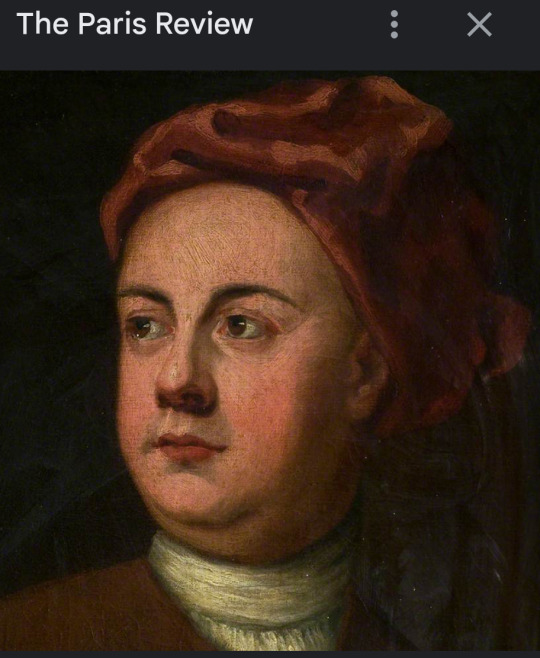


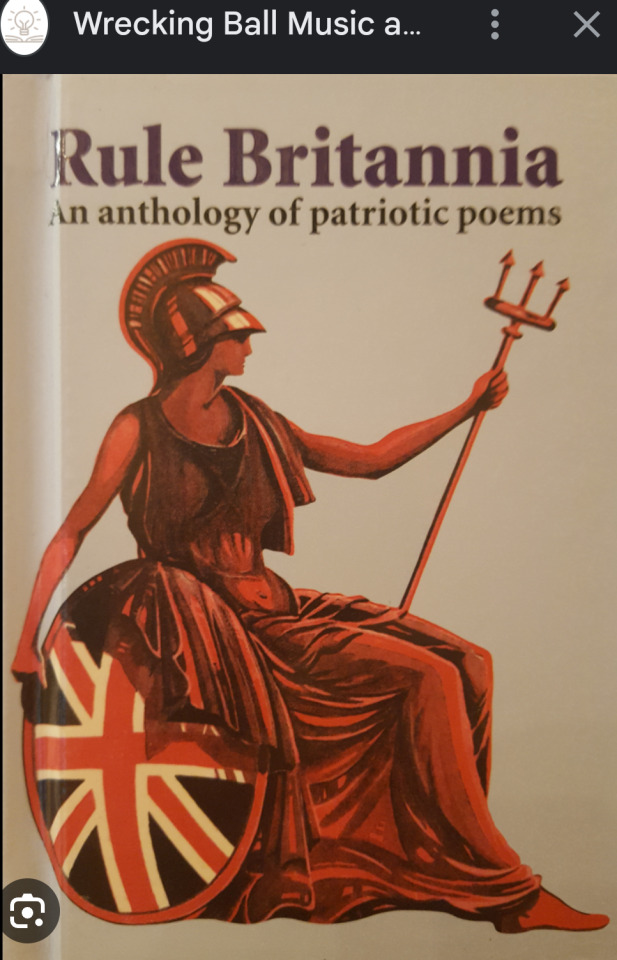


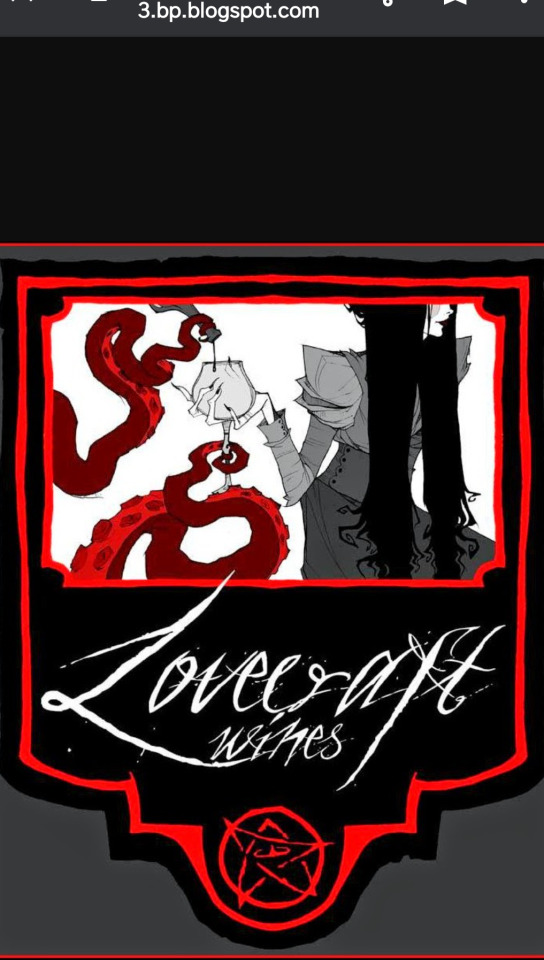

Pics:
1 & 2. Thomson, English author of "The Seasons", "Rule Britannia", etc...
3. Original cover to "The Seasons."
4 & 5. Beautiful cover of the British anthem "Rule Britannia" & a page of it set to music.
6 & 7. Ads for Lovecraftian beverages!!
8. Another shot of the Seekonk River, surrounded by woods.
1913: Output, Part 2.
Plot: This poem starts out with a Latin quote by William Wordsworth¹, but, originally from Virgil's "Georgics", Book 2: "...The wide open fields: the caves &... lakes; But, ...cold Tempe², ...the roaring of the borne³ &... soft sleep under the tree, are not absent⁴."
In the beginning, Lovecraft demands that the Dryads⁵ "Turn... from towns to (thoughts) of a rural kind; Amid decadent sights⁶, a spot disclose, where... woodlands repose. Where... time has... left, unchanged, our ancestral⁷ land."
Right away, Howard joins happiness with his youth & the park -
"Quinsnicket! Haven of the wearied heart... Whose shady glens... years dissolve... & lead backwards to a happier day."
Then, HPL 'explains' why this is so -
"With mankind, the sweetest days are 1st; ...Men become more wretched as they live⁷!"
As for why nature helps the weary soul -
"Away, Reality! And let us roam (in) Quinsnicket's realm - Imagination's home."
Lovecraft then describes Providence quickly -
"What city of the blest... Whose spires & domes reflect... morning rays (&) whose gold paved⁸ (streets!) astound."
Now, Howard gets mythological -
"In yonder pool we... expect, timid Nymph⁹ or Satyr¹⁰ to detect. Our eyes for Naiads¹¹ scan, And (our) ears strain to hear the pipes of Pan¹²."
Here, we turn to a more physical description -
"Yon rocky bluff, above the water's side, Defies the ages with primeval pride."
Then, HPL drags in the aboriginals, never mentioning a specific nation's name¹³ -
"(Their) council flame burned (before) the tribe¹⁴ (with) chief & braves of copper hue... (with a) sober look... pipe passed thru & fro..."
Amazingly enough, the most racial that Lovecraft gets is "(Their) war dance to tom-toms blow¹⁵."
Notes:
1. What a great name for a writer! William Wordsworth was an English Poet Laureate who helped usher in the Romantic Era of 1800 to 1850.
He's best known for his poems "The Prelude" & "Daffodils."
2. Tempe is the name of a wooded valley between Mt. Ossa & Mt. Olympus in Thessaly, Greece - now called Tembi.
Has 1 of the highest amounts of rain in the world.
3. This verse sounds a lot like being "carried" on a "roaring" river current...
4. The quote is about 1's youth & the 'lost' natural beauty we once enjoyed.
These memories stayed with this person & continued to have meaning for them.
And, these particular thoughts serve as a connection to the writer's sense of wonder.
Nature is where they find peace & tranquility. Where they feel safe & comfortable.
5. Dryads are Greek nature spirits who are usually bound to a forest or who focus on an oak tree.
6. Hmm... Howard's just north of the city of Providence. So, he's saying that it's also rife with "decadent" slights...
7. HPL's idea of 'ancestral' is limited to the British invasion of what are actually American Indian lands...
8. 'Gold paved streets' comes from the 1800s tale of "Dick Whittington & His Cat."
In that story, this saying describes London's roads. And, means that "it's easy to make money there..."
9. Nymphs are minor Greek nature spirits usually associated with fertility, growing things or water.
Long lived but, not immortal!! So, they were playmates of the Greek Gods.
Usually kind & helpful to men...
There's some 20 types of nymphs.
10. A Satyr is a Greek nature spirit with ears & tail that look like those of a horse.
Walks around with a permanent & exaggerated erection!!
The same as the Roman fauns.
11. Naiads are water spirits living in rivers, springs or waterfalls.
But, not in the oceans... That's the Oceanids' job.
Only Nereids can move in both sea- water & freshwater!
12. Pan is the Greek God of the Wild, rustic music, fertility, hunters, flocks & shepherds.
Has the back quarters, legs & horns of a goat - like a satyr!
His unseen, but 'felt', presence would arouse panic in travelers.
Boon 'companion' to nymphs...
13. Around Providence, it should be the Wampanoag American Indian nation.
14. American Indians were called tribes by the invading Europeans. But, they were actually nations & should be regarded as such today.
15. Wampanoags were a group of 30 Algonquian speaking nations. This Confederacy spread from R.I. north thru Massachusetts & south into parts of Connecticut.
They have all lived in this area since around 12,000 BC & were led by a Massasoit ("Great Chief") from 1581 til 1661.
It was members of the Pokanoket nation that helped the Pilgrims back in 1621.
Europeans had been visiting this New England since the late 1500s. And, had begun reducing the Wampanoag population via introduced diseases!
English colonists pushed them further inland, resulting in war. The losing abo nations were dispersed into slavery or reservations.
Only the Mashpee & Aquinnah nations were recently recognized by the U.S. government.
Wars of conquest were unknown to them. As they didn't believe in land ownership.
So, only quick raids were undertaken.
"Powwows" were actually shamans. Pniese were their own male "knights" & female "counselors."
Drums were seen as "living entities", guardian spirits & a reference to a past way of life.
Female singers used water drums as portable accompaniment for their sacred music & dances.
Drums help Wampanoags to "live by the rhythms of Mother Earth" & also reinforces their "relationship to the spiritual forces ruling the universe."
War dances involved beating the ground with sticks & screaming out piercing war cries.
The warriors requested the help of spirits & painted their bodies black, red, green or white.
They drank a tea made from juniper berries - to help the blood clot, in case of being cut...
To Be Continued.
0 notes
Photo
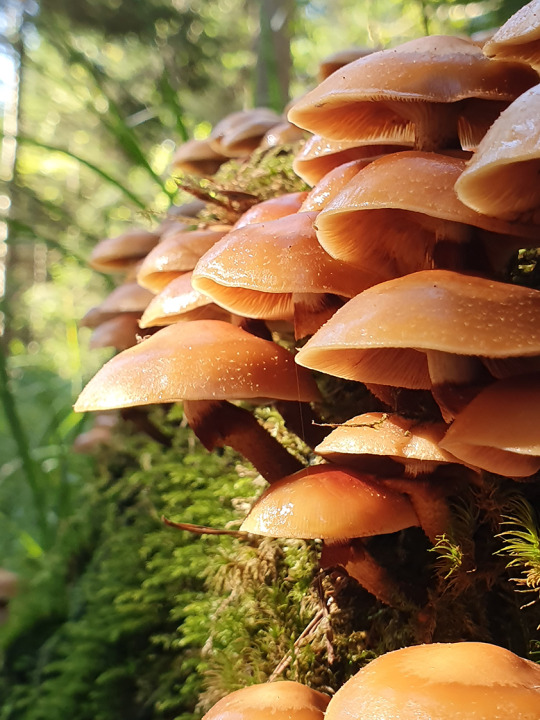
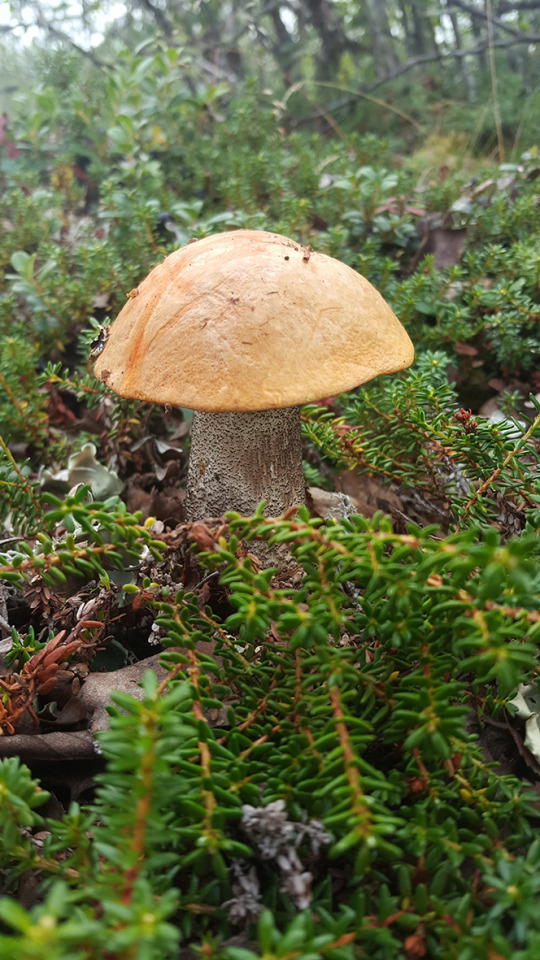
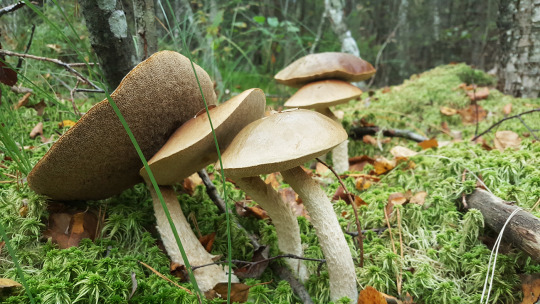
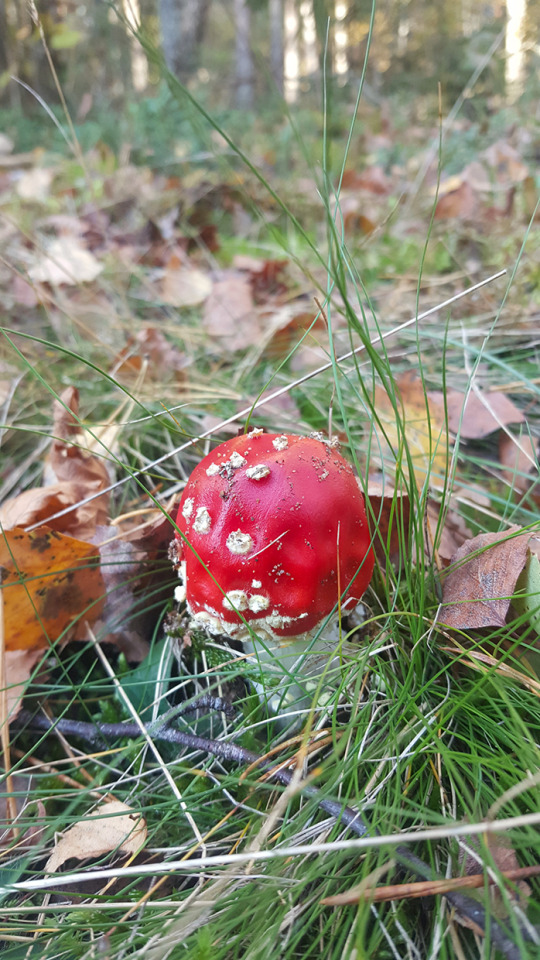
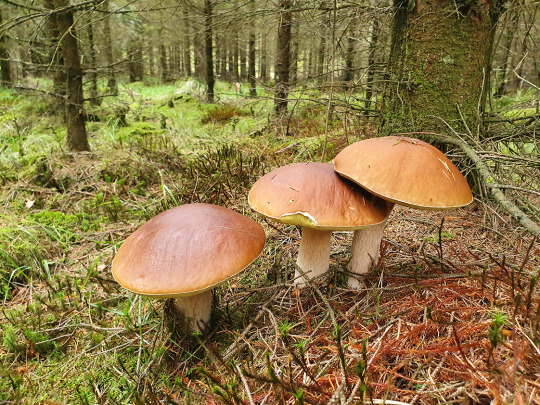
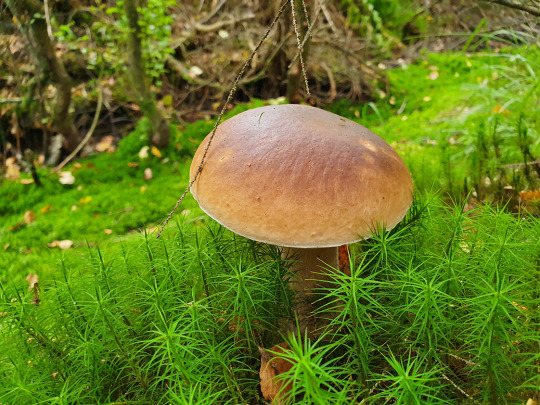
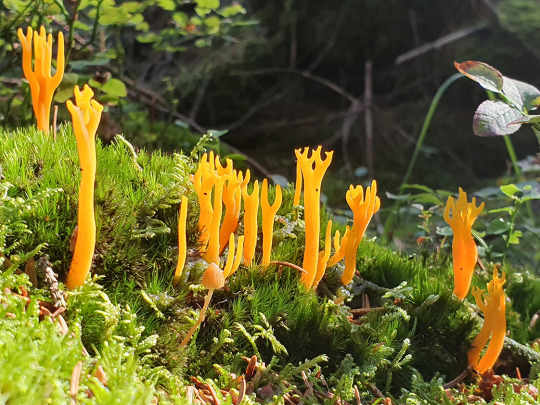
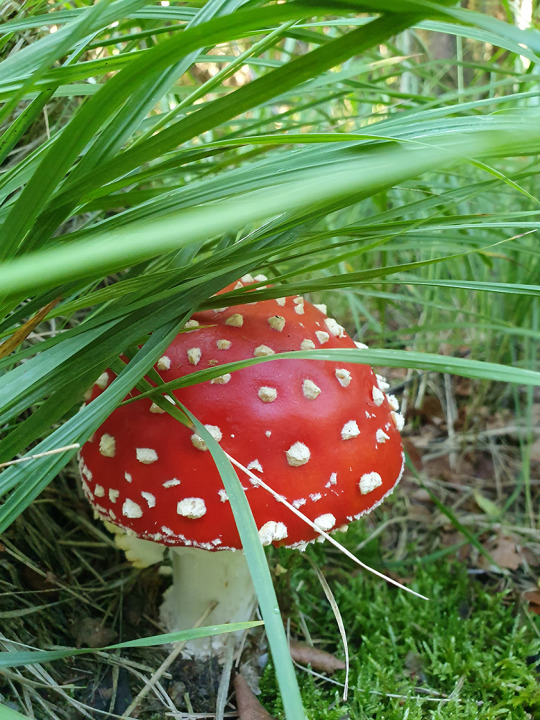
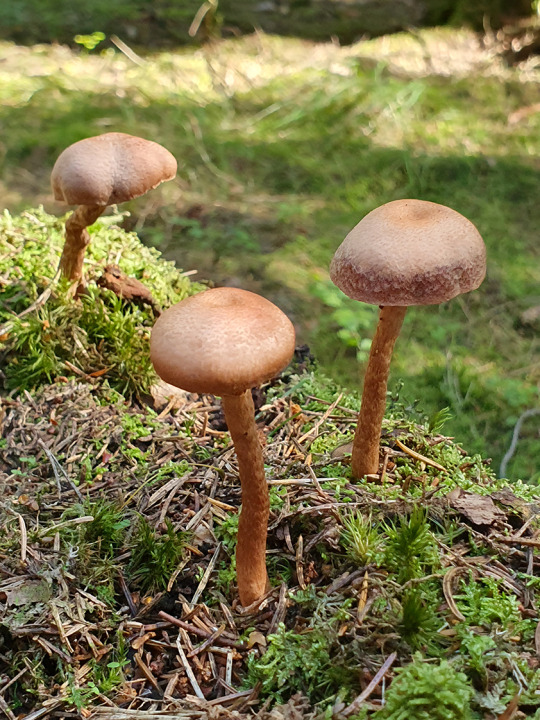
Mushroom hunting is in our blood Text and images: Viktorija Bernataviciute
I think only a few Lithuanians from my generation could say that they have never been mushroom picking - it is a big part of our culture and traditions. There is even a poem for kids written by a famous Lithuanian poet, which tells a story about mushrooms, who spurred by the wife of their king ( a cep, of course), are preparing to go to war against other woodland creatures, only at the end to be plucked by eager mushroom pickers. Most of us could recite parts of this poem by heart!
A lot of Lithuanians have very fond memories of spending sunny autumn days in the forests, hunting for mushrooms with their parents or grandparents. And I wanted to share some of those memories.
I always used to go mushroom picking with my grandparents. The day would start very early, I would need to be up at 4 or 5 o’clock in the morning - you need to get there early, before all the other mushroom hunters! Those mornings in the woods were very magical - quiet and still, dew drops still covering everything around you. And the woodland smells around you were just dizzying!
We would walk around the woods, never straying too far from each other, occasionally giving a loud shout of ‘AAUUUUU’ if someone was out of sight. We would all carry wicker baskets, hand made by my grandad, to put our mushrooms in. Later on in the morning my grandmother would unpack a picnic and we would all sit on a blanket on the soft mossy woodland floor, eating sandwiches and drinking tea.
By the late afternoon the car would be full of baskets of mushrooms and we would go back to my grandparents’ summer house. And then the hard work would start! We would clean all the mushrooms, then cook, dry, freeze and pickle them, working outside in the garden until late evening. Oh, and the success of your mushroom hunt would be measured by how many cep mushrooms you found that day!
Up to this day I still enjoy mushroom hunting every autumn, and can’t resist taking a lot of pictures of these beautiful and tasty funghi.
3 notes
·
View notes
Photo

Otso, thou my well beloved, Honey-eater of the woodlands, Let not anger swell thy bosom; I have not the force to slay thee, Willingly thy life thou givest As a sacrifice to Northland.” - The Kalevala - Rune XLVI “Otso the Honey-Eater” Otso’s Bite is a mythically-influenced, yet historically-rooted, early 8th century Merovingian/Vendel-period spatha. Inspired by the character of Otso the forest-spirit, as described in the epic Finnish poem, “the Kalevala”. The key historical foundation for this sword began with its pommel design, which was directly based off of an artifact found in Vesilahti Kirmukarmu, Finland, along with other Christian and Pagan artifacts. The strange and mysterious pommel depicts a snarling bear with wizard-like faces on all four joints. The pommel was beautifully carved in wax by Luke Shearer Bladesmith, and then skillfully cast in bronze by Sun and Stars Forge - Emiliano Carrillo and Matthew Berry. The upper and lower guards were made from buffalo horn and antiqued bronze, and the grip was shaped out of a solid piece of rock maple with Vendel-era carvings. The pattern-welded blade was forged out of 800+ layers of 1075 and 15N20 steel. Made from Baltic poplar and lined with wool fleece, the scabbard reflects several Vendel-era findings. The entire scabbard is tightly wrapped with thin cowhide leather, and tooled with period-accurate ornamentation. The hand carved bronze fittings and the scabbard bridge depicts Otso and the face of Väinämöinen. The red garnet on the bear's back represents blood from a wound, either a wound of its own or from a greater King who, like Otso, freely gives his life for others. OAL: 37 1/8” Blade length: 31 3/4” Blade width: 1 3/4” Grip length: 3 5/8”
54 notes
·
View notes
Text
Episode 6 - Tsing part 1
Episode link; https://open.spotify.com/episode/3x0cMRYDmN5M8lDCZIZxEK?si=07ec23a2d8ac485e
The sound of a temple bell is heard in the cedar forest at dusk,
The autumn aroma drifts on the roads below.
The moving cloud fades away, and I smell the aroma of the mushroom.
Oh Matsutake:
The excitement before finding them.
This episode isn’t about Japan. It’s not about Mushrooms. It’s about living in our own mess, it’s about international relations, it’s about capitalist trading. But the same way we can trace politics through cows, or social relations through cockfights, the art of anthropology is in noticing the small things which might teach us more. In the face of global capitalism a mushroom might seem humble but that is what Anna Tsing would call a problem with scale, because as the most valuable mushroom in the world it couldn’t be further from ‘humble.’
This is notes from the field desk
(Theme)
(Sounding sleepy)
It’s about, ummm quarter to five. I’m in Tsukiji whole-sale market in Tokyo. I’m maybe jet-lagged but that would make it like 9pm to me and actually I feel significantly worse than that. I’m here this early because the auction runs from around 5am to six fifteen. Whilst the market is famous for its tuna auctions, if you’ve seen Jiro Dreams of Sushi then you’ve seen the market and it’s ginormous frozen tuna, but they also sell mushrooms here. This market is in fact so famous they had to ban tourists on several occasions. Thankfully it’s not currently one of those times,i’m sat in the tourist section, i’m in the back because of the desk and well because the guards said I was a disruptive influence.
I’m paraphrasing he actually said “move it, Deku” before shoving my desk to the back. My translation app couldn’t really figure out Deku so if anyone could help me out with the meaning? It doesn’t really matter, seen as almost everyone is here for the Tuna, I have a pretty clear view of the auctioneers arranging matsutake on a trestle table. The staff are wearing, what kind of look like, bowling shirts (kind of questioning) and baseball caps which have a little board on the front which have some kanji which I can’t read. Really someone else should have come on this trip.
This is maybe petty but to be honest now I’m doing this because I have to, i’m not enjoying it as much. Is there something wrong with me? Anyway that’s a discussion for another time.
They are organising the mushrooms by, size, value and origin. These mushrooms have probably been sorted at least twice before by value but origin has a significant impact on their eventual sale price. As one Japanese importer explained to Anna Tsing “Matsutake are like people, American mushrooms are white, because the people are white. Chinese mushrooms are black, because the people are black. Japanese people and mushrooms are nicely in between.” Okay, I recognise that we’ve gotten slightly ahead of ourselves here. How does a mushroom come to cost between 1000 and 2000 dollars per pound?
Matsutake first appears in a poem from 8th century Japan which praises it’s smell which would go on to become synonymous with Autumn in Japan. The mushroom had started popping up around Kyoto and Nara, areas which had been deforested for timber and fuel. In fact, deforestation is the reason why matsutake became common in Japan. This is because these mushrooms have a symbiotic relationship with red pine trees. Red pines tend to grow most successfully in mineral rich soil left by deforestation and could grow more easily without the shade from broadleaf trees which had been cut down.
This is the start of Anna Tsing’s interest in these mushrooms, not because she’s just really into foraging, although she is, but because of what they symbolise, think Geertz. In the wake of capitalist ruin, here read deforestation, this mushroom thrived. This is so generally understood about Matsutake that people say the first thing to grow after the bomb was dropped on Hiroshima was a Matsutake.
Written in the wake of the 2008 financial crash and with the results of climate change becoming undeniable Tsing wants to find a way that people can pull off the same trick. And she found a parallel in the forests of Oregon, but that is for next week.
So how does a mushroom you literally find in the trash become the most expensive fungus in the world? Well by 1900 in Japan it had become the culturally ubiquitous idea of Autumn. Think lambs in spring or incredibly drunk, sunburnt bald men with a union jack tattoos and British summer. Matsutake were everywhere, in Kyoto, they became the generic term for mushroom. So far, so cheap commodity right? But then in the 50s people stopped using wood as their main fuel, woodland was cut down and paved for suburban development, broadleaf trees grew back and in the shaded forest, Matsutake started to disappear. By the 1970s Japanese Matsutake were incredibly rare. This coincided with rapid Japanese economic development. The culturally significant and now rare mushroom became gifts, bribes and perks for businessmen. Consequently the price skyrocketed.
Huge demand but limited supply in Japan meant the international market suddenly gained importance. And non-Japanese mushroom pickers from around the world flooded into the market.
Oh hold on the auction is starting. I wanna see if I can buy one.
Umm I have no idea what is happening.
Excuse me. Nope ignored.
Umm.
Hello.
13,000 yen!
(Awkward silence. Fade out.)
Okay so umm, I won the auction. Is that how you say it? But I bought one mushroom for 120 dollars and then they asked me to leave. So we’re set up in a cafe outside the market. If you’re wondering, yes, the guy who has been following me is here.
Hi mate. You alright? Cool.
He was in the auction too but I've decided to live and let live. In part because of what i’ve learned from reading Tsing.
I guess uhh lets see what the fuss about this mushroom is about.
Smells mushroom nervously
Yep smells like dirt. Cool. What am I going to do with this now?
Okay smells like dirt. Great. That’s 120 dollars for some dirt. I don’t even like mushrooms what the fuck am I doing. Okay, I guess we should talk about isolation and contamination which is where Tsing starts to get confusing, so, sorry about that. I can really understand why the students don’t get it and I think if the last few weeks have proven anything it’s that the students seem to understand anthropology better than I do. But I’ve done the reading and I've got notes so let’s give it a shot.
Tsing says capitalism is based on a growth and progress model. Wow, we’re off the rails already. In other words, and I'm not an economist so don’t @ me, the health of an individual, company and nation under capitalism are measured by their ability to generate more than they did previously. The aim is for GDP to grow, for company profits to increase, individuals to earn more etc. One way to achieve this end is to focus on scalability. Which is the ability to create more of the same product without changing the product. This is often achieved through isolation.
Yikes this episode is like “dictionary corner.” For isolation think of old Henry Ford and his assembly line. Instead of 5 guys working on every aspect of a car, the assembly line isolates each component and has one person make that part. Now you can make lots of cars quickly. Take this podcast, I write it, record it, edit it, and upload it. If I hired a writer, an editor and a social media person. I could just record the episodes and we could all be working simultaneously, produce more podcasts, get more listeners, then maybe this podcast could generate a profit.
Good news right? More of everything is made more quickly for less money, which means we can all have a car. Or a podcast. But Tsing sees some problems. She takes a different example of scalability. Portugese sugar plantations in Brazil. Sugar cane was grown by splitting a sugar cane and sticking it in the ground. Functionally it was a clone brought from New Guinea and planted in Brazil. As a farming product it couldn’t be more isolated. Unlike a matsutake say, which can’t be scaled because it grows almost by random in relation to the soil and the trees around it, the sugar cane has no relationship to its surroundings.
Now let's talk about the farm workers. Sugar plantation workers were slaves brought from west Africa to Brazil. Like the sugar cane they were isolated with no social relations in Brazil which prevented escape. This is why slave traders split families, social and cultural groups. Their alienation and isolation made them a controllable, standardized workforce. Portugal made huge profits from this and could keep the uncomfortable effects hidden, seen as the whole project took place in west Africa and south America, far away from the Portugese eyes. This is maybe the first example of what academics call “space-time distanciation” I know what the fuck is distanciation other than a great way to be the most hated person at a dinner party or the pub.
Basically it’s just a bullshit way to say doing things from far away but in real time. So like ugh I don’t know, (Rising anger) a kid in America can snipe you on COD and call you a homophobic slur and you experience it as it happens even though he’s thousands of miles away. And however much you threaten him he won’t experience any consequences because he’s far away and you’re thirty and trash at shooters. (awkward pause) Not a real thing that happened to me, just a random example.
So this scalability and distanciation were created and spread around the world by European colonists but it was Japanese markets which modernised the idea. In the 60s to the 80s Japan actually gave American economic dominance a little scare because of its shift to outsourcing. Instead of Japanese companies making products in Japan where labour was expensive they made products abroad where labour was cheap and took advantage of increasingly speedy global supply lines to turn huge profits.
Matsutake picking is an example of this which we’ll talk about more next time but in short, casual workers pick and sell them for a fraction of their market value in America, the middle men then transport it to Japan where it’s market and cultural value is increased and sell it for a huge profit.
Another example would be fast fashion. Everyone remembers the scandals when it came out that gap or nike or primark had their clothes made in terrible conditions. A lot of brands defended themselves by saying they had no idea about the conditions. To an extent this is true, but it was deliberate ignorance. They put their production in the hands of intermediary companies in countries far away from their shareholders, employees and customers creating plausible deniability.
There is another problem which is obvious really. Scale can only go so far, which is until all the resources are gone. Then the project has to move on and do something else. Think of Japan after they had cut down all the trees. Or if you really want to depress yourself, fossil fuels.
Okay, okay what’s the point! Tsing says all this stuff, the distanciation, the scalability, the obsession with more profits, the isolation is the cause of the precarious lives more and more people are experiencing. Think of zero hours contracts, or uber driving or amazon workers pissing in bottles. It’s easy to cut wages, to allow bad working conditions, to strip mine the rainforest when we are distanced from the consequences. So long as it happens somewhere else, to someone else, when we have no relationship with the products we consume, or create. Think of the podcast again. If I hired all these people it would be more efficient but then I wouldn’t have the same relationship with it. I would become alienated from it. That’s how little by little people have less of an understanding of the things around them. That’s how we can separate the petrol we put in our cars from the environmental damage that doing that causes.
Wow. Depressing. Jesus. Remember when this show used to be about cows and magic?
(sigh)
Taking things seriously sucks. Okay but Tsing reckons that by looking at these expensive mushrooms there is hope. Capitalism can make us feel lonely but looking at Matsutake reminds us that even in capitalist ruins like a destroyed forest new things can grow. Those things grow from relationships, the encounter between the mushroom and the pine tree and the soil from deforestation. It’s a reminder that we aren’t actually alone that there aren’t any “challenges we might face without asking for help from others, human or not human.” Through relationships we change and Tsing says “The important stuff of life on earth happens in those transformations.” So you know, join your union, talk to your neighbour, forage for mushrooms. It might just make the world better. And if it doesn’t, well at least you have some friends and mushrooms. Wait did i just say join a union? Am I woke? Must be the jet lag.
Time for the extract;
How does a gathering become a happening, that is, greater than the sum of its parts? One answer is contamination. We are contaminated by our encounters; they change who we are as we make way for others. As contamination changes world making projects, mutual worlds - and new directions - may emerge. Everyone carries a history of contamination; purity is not an option. One value of keeping precarity in mind is that it makes us remember that changing with circumstances is the stuff of survival.
But what is survival? In popular American fantasies, survival is all about saving oneself by fighting off others. The “survival” featured in U.S. television shows or alien-planet stories is a synonym for conquest and expansion. I will not use the term that way. Please open yourself to another usage. This book argues that staying alive - for every species - requires livable collaborations. Collaboration means working across differences, which leads to contamination. Without collaborations, we all die.
The problem of precarious survival helps us see what is wrong. Precarity is the state of acknowledgement of our vulnerability to others. In order to survive, we need help and help is always the service of another, with or without intent. When I sprain my ankle, a stout stick may help me walk and I enlist its assistance. I am now an encounter in motion, a woman and stick. It is hard for me to think of any challenge I might face without soliciting the assistance of others, human and not human. It is unselfconscious privilege that allows us to fantasize - counter factually - that we survive alone.
How do you conclude something as complicated as this? Okay how about this. Often you’ll hear people talking about capitalist alienation and it’s not really clear what that means. I think what Tsing is saying is that capitalism wants people to be individualised. That way labour can be scaled up, because the products aren’t related to the context that they are made in. So you can make a ford car in a factory in Detroit or Dhaka and the product will be the same. But Tsing is giving us a warning and a reminder that we aren’t individuals. That we have a relationship with everything around us and forgetting this can destroy our surroundings. This means humans and non-humans too! If we’re going to survive late capitalism and climate change we have to re-engage in these relationships.
0 notes
Text
Bears In The Thrush
i
Two bears in the thrush Rolling in their play Lost in the unhurried hush Of a quiet Autumn’s day. Over steamy bowls of ramen broth, One bear to the other grins. As he plunges his snout into ramen froth He celebrates how his loves wins Him a book of poetry For him to hold as he reads. And into this realm of Art and sophistry His bear mate loving leads. She shows him to a new forest glade; Her paw he holds tight and warm; She leads him into the Sylvan shade And provides him shelter from the storm Of the many thoughts in his bearish brain; Too many thoughts for a bear to think. So she draws him a bath, hot and pink For him to gently sink Into peaceful sleep true and deep In such reprise he dreamless lies The seeds of sleep are his to reap As she kisses his dream filled eyes. And this was their play in their day to day At night they lay in each other’s arms. And like this both bears were content to stay Enamored of Fall’s eternal charms.
ii
Then there came a frightful storm Cold wind crept into the forest lair There came the crack of lightning’s whip That gave both bears a scare! Then there came torrential rain That swept one bear away And both bear hearts were filled with pain That the rain had disturbed their play. And neither bear could find any rest Since the storm had swept the two apart. There was so much ache in the one bear’s chest Because he could not find his heart. So he scrambled in the bramble, He searched through the brush. He listened to rivers ramble, He waited in the hush. Since the cold winter’s day that took him away From his bear mate whom he loved so much Bemoaned his wounds under many moons The bear could not live as such. So thus began bear’s search In valleys low and mountains high. He looked in the chapel and checked the church, He even scoured the sky. He asked each star that he came across “Have you seen my baby bear bright?” But compared to her their light was dross, So silent stayed the Night.
iii
One day bear came upon a Tree Whose boughs were dark and green. He asked the Tree if it did see Where his baby bear mate had been. “Why art thou searching?” asked the bark, “Who is she to thee?” And so bear sat down, his face was stark As he began to answer the Tree:
She is my sadness, she is my joy, She is the glint in the gold of Troy. She is the ocean and she is the boat, She is the grass and she is the goat. She is the tune in the bear song I sing She is the meaning behind everything! She is my baby and she is my bear But O Great Tree sitting there – I can’t seem to find her anywhere!
“Stop searching for thyself,” said the Tree, “Except in her eyes O Bear, dost thou not see? Love is the Truth that lurks in the Lies That the Woodland Folk daily speak. They fill the forest with their clamor, From the Lion’s roar to the Mouse’s squeak, All they care for is glamour! So harden thine heart against their jeers. Guard well thine ears. Love is a war waged for a thousand years Love it is that informs all of your Fears.
So be thou brave, O Bear! Bravely go forth and seek! Love is not glasses and love is not hair And Love is surely not for the meek.
And so the bear thought and thought. He scratched his berry stained snout. It was with iron that his love was wrought, Faith must be what Love is about! So he decided to hold out. Just then came a rustling in the brush - It was his baby bear bright! He let out a yelp and picked her up in a rush, Oh what a happy sight!
Two bears in the thrush Rolling in their play Lost in the unhurried hush Of a quiet Autumn’s day.
Notes:
I wrote this poem in the grass as an anniversary gift to my girlfriend. Our first date was at a ramen restaurant. Hence the peculiar lines 5-7. That night, she gave me a Collected Poems anthology that she stole from her grandmother. Hence the lines 8-10. Also, I’m thinking of turning this into an illustrated children’s book one of these days.
2 notes
·
View notes
Text
2020 April PAD Challenge Day 5: 'Forest of Clarity' #aprpad
2020 April PAD Challenge Day 5: ‘Forest of Clarity’ #aprpad

Today’s prompt: Write a ‘moment’ poem
Forest of Clarity
In a forest’s sweet reverie Comes the soothing song Of kind, peaceful clarity; Whispered in the wind Waiting to be captured By any patient wanderers With minds clear enough to hear…
Past events cannot entrench This serene woodland haven. Instead there is only soft breeze And distant water flowing; The sounds of deep contemplation Drowning…
View On WordPress
#april pad challenge 2020#mental health#poem#poems#poetry#prompt#prompts#the awakening#writers digest#writing
0 notes
Text
Artemis Of The Moon

https://abstract.desktopnexus.com

Project Created by Kerritwyn )0( © All original material in this site is under copyright protection and is the intellectual property of the author.
Artemis Here is the virgin Goddess, Artemis, Running across the mountains of Taygetos, Or up the steep hills of Erymanthos, Running with her maidens, Running with the deer, Accompanied by birds, Ranging widely in the wilderness, Playful and strong and free and beautiful: The heart of her Mother is glad. Homer, The Odyssey (1) Artemis is the preeminent goddess of classical Greece, though her origins are lost in time and matriarchal goddess worship, and may include a descent from a pre-Indo-European sun goddess.(2) Artemis is known from Greek, Lydian and Etruscan inscriptions and texts, and on very ancient tablets from Pylos.(3) Artemis and Hecate are linked through time, through the moon cycle: Hecate, awesome and linked with death, and Artemis, youthful, beautiful, reflecting the purity of nature, and linked with unmarried motherhood.(4) Hecate and Artemis can be seen through the prism of time as two sides of a mirror, and many qualities attributed to one, in one culture, were passed along to the other, at a different time. Artemis was said by the classical Greeks to be the daughter of Zeus and his mistress, Leto, and the twin sister of Apollo, who was born a day later.(5) Athenian girls of marriageable age dressed as bears and danced to her, and offerings on her altars included phalli, sacrificed animals, fruit, spindles, loom- weights, shuttles, and woollen and linen cloth.(6) Artemis was the protector of all life, but she was also the essence of apparent contradiction: the virgin who promoted promiscuity, the huntress who protected animals, a tree, a bear, the moon.(7) She was the epitome of feminine possibility, changing as a woman does as she moves through her life, and an expression of infinite, explosive and sometimes terrifying power. Virgin. Artemis was viewed as perpetually unmarried, virgin in the sense of being her own woman, subject to no male, though she was often invoked in dying-god fertility and harvest rituals.(8) In this context, virginity symbolised autonomy and independence, and the freedom of the goddess to be her own person, to be true to her own beliefs and instincts, and to pick and choose her lovers freely.(9) Other authors see this aspect of Artemis as an Amazon and a passionate and aggressively sensual lover of women.

Huntress. On the full moon in August, in Ancient Greece, one of the great festivals of Artemis was held, dedicated to Artemis in her aspect as Huntress. She is often depicted with a bow and arrows, and with one or more hounds. A goat was sacrificed to her during this festival, to honour the magickal control she exercised over all animal life. Honouring the savage huntress recognises that life feeds on life. Whether the life we consume is animal or vegetable, we cannot survive unless we devour the bodies of once-living entities.(11) In this form, Artemis was an elemental force, a creature of instinct, who killed certain individual animals, but assured that the species survived, and who killed anyone who hunted pregnant animals or their young.(12) There are few Whom laughing Aphrodite cannot conquer; Artemis is one, For she is already in love with the hunt, With the bow and the quiver full of arrows, With the sound and the scent of the chase, The songs and calls of the hunters, And the fierce blood shed by Wild boar and deer as they die In the shadowy forest glades; And the dancing, later, To the music of lyres Among right-living people. Homer Artemis also used her bow and arrows for specific acts of justice and vengeance. When her mother, Leto, was angered by the bragging of Queen Niobe that her own children were superior to Leto's, and called upon her archer daughter for vengeance, Artemis killed all of Niobe's offspring, and turned Niobe into a block of black stone, from which a weeping fountain endlessly poured. Artemis also killed the serpent, Python, and the giant, Tityus, for tormenting her mother, and the spying hunter, Achteon, who secretly watched Artemis at her bath. Artemis executed him by turning him into a stag, and setting her own hounds upon him. Dozens of others were allegedly killed by Artemis, according to Greek myths. Artemis also inflicted Teuthras with leprosy, so that he would die slowly and miserably, when he killed one of her sacred pigs.(14) In addition to being an aloof and balanced game warden, this aspect of Artemis was also a ruthless and swift force for vengeance against sacrilege or insult to the goddess, or on behalf of any woman or female creature who was cruelly treated.

Matron of Birthing Mothers. Artemis was invoked by women in childbirth, as Artemis Eileithyia, and was also considered the protector of young girls. In contrast, in another form, as Artemis Brauronia, she was said to have aroused madness in birthing mothers, and her anger could cause the death of a woman in childbirth.(16) Moon Goddess. As she is most typically pictured in Western Art, Artemis is the virginal moon goddess roaming the forest with her female band, bearing a bow and a quiver of arrows, avoiding men, and killing any many who looked upon her. In an even more ancient association, her name has been said to mean 'High Source of Water', and the Moon is considered to be the source and ruler of all water, and of the tides of the ocean, and of the menstrual cycle.Some depictions of Artemis combine the lunar crescent with the archer's bow, and show her bending the moon into the sickle shape, and aiming an arrow through it. Dark Goddess. In Sparta, her dark aspect was worshipped as Taurian Artemis, allegedly with an annual human sacrifice, which was later modified to ritual flagellation. Ephesus. The many-breasted Artemis of Ephesus was worshipped as a fertility goddess, in a temple which was said to be one of the seven wonders of the ancient world.(21) This temple at Ephesus is believed to have been originally built by the Amazons (1000-600 B.C.E. (22)), and was destroyed by barbarian hordes in the middle of the 3rd century.(23) King Croesus rebuilt the temple 100 years later, and it's chief object of love and adoration, mentioned in the Acts of Apostles, was a palm-wood statue of Artemis. She received many rich gifts, including gold and silver awnings and garments for the statue, which were regularly changed, and which included golden sculptured grapes, giving the appearance of many breasts.(24) Artemis was served by chaste priestesses called Mellisai, or "bees", and by eunuch priests.(25) The temple continued to be a place of reverence until approximately 400 A.D., when Christians allegedly destroyed it.(26)
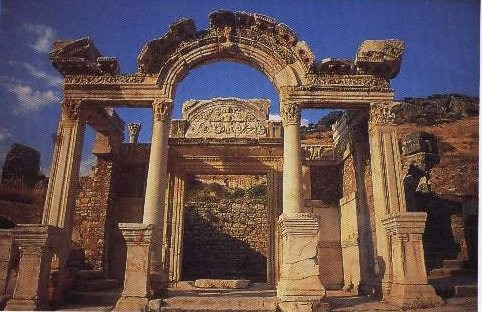
Temple of Artemis at Ephesus
Magickal Associations. Bears, the fiercest animal mothers, are sacred to Artemis, and she is associated with the constellation of Ursa Major. Guinea fowl are her birds. Her magickal number is 777. Her Tarot cards are Nines, the High Priestess and the Temperance card. The gems associated with her are quartz, moonstone, pearl and crystal. The plants associated with her are artemisia (one form of which is dusty miller, often known as wormwood because it is said Artemis wormed her hounds with it, banyon, mandrake, damiana, almond, mugwort, hazel and moonwort. The animals associated with her are the elephant, dog, centaur and horse. The mineral associated with her is lead. Her perfumes are jasmine, ginseng, menstrual blood, and all sweet, virginal odours. Her magickal weapons are perfumes, fleet sandals, and the bow and arrow. Other concurrent names for her were Callisto, Cynthia, Delia, Phoebe, Pythia and Parthenos. She was subsequently adopted into the Roman pantheon as the goddess Diana.
Spells.

http://majorolympians.com
Much magick invokes Artemis, because of her extraordinary depth and complexity. Out of the wealth of possibilities, here is one lovely example: Woodland Love Spell This spell is designed for those seeking a female lover, using earth-focused forest energy and woodland spirits. On a bright and sunny day, go to a favorite spot in the woods, with fruit, cheese, bread, a knife, a felt tip pen, a small piece of rose quartz, and some green cord. Get comfortable, let go of the mundane world, and tune into the life of the woods around you. Cut a slice of bread, a cube of cheese and a piece of fruit, and bury them in a hold you have dug at the base of a nearby tree. Then, on a large broad leaf, write with your pen: Lady of the Forest, Lady of the vine, Bring to me The love that is mine. Blessed Be. Wrap the leaf carefully around the rose quartz, tie it with the green cord, and raise earth energy to charge your charm. Place the charged charm on top of the buried food, and chant: Oh Ancient Huntress, I come seeking you. Come to me, Artemis, Mistress of the Hunt, Earth Daughter, Green Mother, Lover, Creatrix. Bring me a woman suited to be my partner. I will accept and love the one you choose to Embody yourself within. Let us bind together, Play together, Love together, Entwining our souls and minds, Entwining our hearts and bodies, Entwining our paths and lives. So mote it be.

Poem & Invocation to Artemis
Fierce Goddess By Kerritwyn )0( Mighty Goddess, Proud and free, Tall and strong, Swift as the wind, Fill me with the fierce joy Of your riotous passion. Noble Goddess, Stern in punishment, Brooking no cruelty, Suffering no mockery, Fill me with the fierce joy Of your righteous vengeance. Mesmerising Goddess, Changing with the moon, White as ice, Red as blood, Fill me with the fierce joy Of your female mysteries. Artemis and Achteon by Boris Vallejo
http://www.orderwhitemoon.org/goddess/artemis-moon/Artemis2.html
1 note
·
View note
Text
Mystery Hike
The original Hiker’s Mystery Train Express was a train operator’s scheme to boost ticket sales that saw fashionable young things from the city traipse around the Oxfordshire and Berkshire countryside. Luckily, my aunt and uncle already live in Oxfordshire and were surprisingly game when I told them I wanted to send them and some friends on a 4 hour mystery ramble based solely on information I found online.

If one did want to get there from London by train, the most direct route would be from Marylebone to Princes Risborough. So let’s get going!


Welcome to your mystery hike! This route is a 9 mile circular walk starting from Aston Rowant church and exploring some of the Chilterns AONB with a pub stop about halfway through. Please make sure you are dressed appropriately for the weather and have plenty of water and sunscreen with you! Open envelope 1 when you are at the church and ready to depart.


My aunt and uncle live in a village called Aston Rowant on the edge of the Chilterns Area of Outstanding Natural Beauty, which comprises around 320 square miles of countryside and villages with a network of more than 2,000 miles of footpaths, so this walk will be starting at Aston Rowant Church of St Peter and St Paul. Church Lane is thought to be part of the London Weye -- a route to Oxford used in the Middle Ages. From the church follow the road out of the village, carefully cross the B4009 and continue straight towards the woods and the escarpment. You will pass Woodway Farm on the right and Woodway Cottages on the left. The first crossing you come to is The Ridgeway. Open envelope 2.


For at least 5,000 years and maybe more, drovers, traders and invaders, have walked or ridden The Ridgeway. As part of a prehistoric track once stretching about 400 km from the Dorset coast to the Wash on the Norfolk coast, it provided a route over the high ground for travellers which was less wooded and drier than routes through the villages below. 139 km is still preserved as a National Trail. Turn right and walk along The Ridgeway, carefully crossing the A40. Continue on under the M40. About half a mile from the M40 on your left you will reach a kissing gate. Open envelope 3.


Leaving The Ridgeway behind, the route heads into the Chilterns AONB proper. The fields here are a mix of private and common land. Common land can be used by anyone for grazing their animals. Go through the kissing gate and follow the path across a field, which may contain sheep, then diagonally through a wood. The path continues with a gentle incline along some fields. About 0.3 miles from the woods, the path turns right then left and climbs more steeply through a lightly wooded area. It then follows the edge of a pasture and levels out. When you reach the road, turn left and stay on the left side of the road. Open envelope 4.


Perched on the Chilterns escarpment, Aston Rowant Nature Reserve contains flower-rich chalk grassland, woodland and juniper scrub. Birdwatchers flock here to see red kites soaring overhead. Follow the road through the Aston Rowant Nature Reserve for roughly 35 minutes. You will cross a bridge over the M40. When you reach the A40, cross carefully to the footpath on the other side of the road then turn right. Continue following the footpath until you reach Stokenchurch. Open envelope 5.


The Royal Oak is the third most popular pub name in Britain. It references the tree the future King Charles II hid in to escape the Roundheads during the Civil War. Stokenchurch was a common waypoint for both sides during the Civil War as it was situated between Royalist Oxford and Parliamentarian London. The Royal Oak is typical of a modern English pub, combining the friendly local atmosphere and traditional environs with less traditional food and drink. They serve a mix of pub grub and Nepalese food. Continue walking into Stokenchurch. After 0.3 miles, turn left onto Church St. Follow the road as it curves to the right. Congratulations, you’ve reached the pub! The Royal Oak will be on your left. Once you’ve had a drink, open envelope 6. NB At this point the group decided the pub I planned to send them to wasn’t very nice so they took a detour and cut out a loop.
The Stokenchurch BT Tower is a not particularly attractive but nonetheless highly noticeable landmark in this part of the Chilterns. Built in 1963, its height above sea level means it remains an important telecommunications hub. Turn right when you leave the pub and head back to the main road. Turn right then take the second right onto Chalk Farm Road. Following the road, turn left then right again. Before the road comes to an end there will be a footpath on your right. Head that way and when you reach a road again immediately turn left between two houses towards the gate. Open envelope 7.
Walking is such a popular British hobby that Wikipedia even has a page on it. The right of the public to walk on private property is enshrined in law and several charitable organisations exist for the purpose of expanding public access to the countryside. Go through the gate then follow the path as it goes alongside fields and through woods. You will reach Gurdon’s Farm on your right after 0.8 miles. Curve right around the farm then turn left towards the woods and hill. Once you reach the woods you will meet a bridleway. Open envelope 8.
This bridleway was at one point Collier's Lane, part of a route once used to take coal from Wales to London. Now it goes through Kingston Wood, a beautiful example of the beechwood forests the Chilterns are famous for. Turn right and shortly there will be a footpath on your left leading up the hill. If the bridleway turns right you’ve gone too far. Follow the footpath up the hill. Once the footpath turns right it will level out and lead you alongside some fields on the right and woods on the left. Keep going until you reach a road. Open envelope 9. NB They rejoined the route at this bridleway.


WWI poet Rupert Brooke, a member of the Bloomsbury Group, regularly walked in the Chilterns and was inspired by the landscape. His poem The Chilterns contains the evocative lines: “I shall desire and I shall find The best of my desires; The autumn road, the mellow wind That soothes the darkening shires. And laughter, and inn-fires.” Turn left and walk along the road for a little bit. As the road takes a sharp right turn, continue straight along a bridleway that goes downhill through the woods. At the bottom you will reach a crossroad. Open envelope 10.


This part of The Ridgeway runs parallel to a disused railway line. Part of the historic railway has been preserved and you can catch a steam train from Chinnor towards Princes Risborough. Turn left and walk along The Ridgeway. Carefully cross Kingston Hill and at the second crossroad turn right. Head straight until you reach the B4009, cross carefully and you’ll find yourselves back in Aston Rowant. I hope you enjoyed the walk!


Sadly, my aunt and her friends were not accompanied by any YA characters; however, if I could have summoned one I think Cassandra Mortmain would have been the perfect guide. Not only is she from the time period of the original mystery hikes but she lives in beautiful English countryside as well. A great many significant events in the book take place on walks, from Topaz’s communing with nature, the walk Cassandra doesn’t take with Stephen, and the one she does with Simon. Throughout the book, Cassandra finds the countryside to be a place of inspiration and comfort so I think she would enjoy a ramble through the Chilterns.

Highly indispensable resources: http://www.astonrowant.org.uk/Aston-Rowant-OS-Map.pdf http://www.petes-walks.co.uk/Latest%20walks/w2017/w20170402/w20170402_1.htm http://www.chilternsaonb.org/ https://www.google.co.uk/maps/ https://osmaps.ordnancesurvey.co.uk/
3 notes
·
View notes
Text
Weekly Update 12/15/19

We had a fun filled week! We enjoyed celebrating the 100th day of school by using our engineering minds to create structures with 100 cups, using Ivrit vocabulary words to create a scene with 100 items, writing about being 100 years old and counting out 100 dot stickers in groups of ten to create a cape to mark how 100 days have flown by.
Our field trip to the Natural History Museum was exciting and informative. We learned about primitive mammals, ornithischian dinosaurs, saurischian dinosaurs, primates, Eastern Woodlands Indians, North American birds, New York City birds, North American forests, and ocean life.
General Studies:
Reading:
This week some friends learned about the long i phonics pattern, spelled i_e (smile), ie (tie), igh (bright), y (dry). They learned how to build, read, and spell these words using “100 Days of School” activities. We also learned about contractions (we have- we’ve). They learned how to use the apostrophe and how to build contraction words. Furthermore, the friends learned about George Washington and Abraham Lincoln and created a timeline to show the presidents’ important life events.
This week, the readers read a new poem titled “100th Day of School.” They learned four new sight words: good, many, going, how.
We’ve been learning for a while
In fact, 100 days!
We can spell, read and write
We can count in many ways.
We’ve had fun and made good friends.
But it isn’t over yet.
Let’s keep going, going, going
And see how smart we can get!
We also learned the poem ”President’s Day.
“Can you guess the president?
Let’s see how much you know!
An honest man with a tall, black hat
Abe Lincoln made his ideas grow.
This man had big, white hair.
He’s the father of our Nation.
In honor of George Washington,
We have a celebration.
We celebrate these great men,
With other leaders, too.
And, one day in the future,
We might be celebrating you!
We learned about adjectives, words that describe a noun. The friends found the words honest, tall, black, big, white, great to describe nouns in the poem.
Writing:
Some friends continued their opinion writing. They were excited to choose their own book and began reading it in preparation for their upcoming book reviews. To celebrate the 100th Day of School, the friends predicted what they would be like at the age of 100. They also had fun taking pictures on an app that turned them old!
Math:
This week in math some friends continued the subtraction unit using “100 Day of School” and Presidents’ Day activities. They also reviewed 2D shapes and manipulated them using position words. They were given directions such as, “Move the closed shape with three straight lines beside the shape with six straight lines.”
Yahadut:
This week the friends completed our brachot unit with a fun and special brachot celebration. the friends got to shop for different food items and sort them by their bracha!
Ivrit:
This week the 5-7 friends were very busy classifying and describing parts of the plant and other winter words by singular and plural adjective. Since in Hebrew the nouns are gendered, the friends chose male or female gender adjectives to correspond with each noun. For example, Tipa Ktana (f)(small rain drop) Sheleg Kar (m) (cold snow), Ale Katan (small leaf ), Givol Aroch (long stem). They composed sentences and illustrated corresponding pictures).
0 notes
Text
Majestic love 5 ( Thorin x reader)
Trying to write as fast as I can because I don't know how to make a masterlist! Sorry
-------------------------------
The company is looking for refuge in a house, Gandalf said it was Beorn's house, he's a skinchanger and while all the dwarves are inside with Gandalf and Bilbo snoring loudly, you're outside sitting in a bench when you see the huge bear near the house.
During your training with the elves you learn to love all nature creatures and to not be afraid of many things, so you decide to get closer to the bear, he roars loudly but you don't get back, you get closer and smoothly caress Beorn's head with his permission, you come back to the bench and after a while you see a giant man nude coming your way, you stand up and give him a trousers that were on the floor next to the bench, trying to not loose eye contact with himto not make him feel embarrassed by his nudity.
"Thanks " he says sitting by your side, his voice is deep and rough "Who are you".
"My name is Y/N and I'm travelling to the Lonely mountain with a company of dwarves, a hobbit and a wizard" you say. "I don't like dwarves, I'm Beorn, it's nice to meet you, it's the first time somebody caress me when I'm in the bear form, you know" "I supposed that, I hope it was nice for you, I liked touching your soft fur" you answer smiling.
You spent the rest of the night talking to Beorn, about your journey, the elves, the dwarves, the goblings and you discovered that, although Beorn didn't like dwarves he hated orcs and goblings more.
When the sun rise he started to cut wood for the fireplace and you helped him when Gandalf get outside. Gandalf face was a poem, he was so scared that Beorn would kill us all that he didn't notice you were smiling next to the giant.
"Don't worry Gandalf, I've thanked Beorn his hospitality and he knows about the company, we'll have breakfast in a minute". After breakfast Beorn said "I don't like dwarves they're greed and deem with the lives of what they consider less than them, but I'll do whatever it takes for her, what do you need".
You take the horses and ponies and go to the Greenwood forest doors, where Gandalf leaves. "Do you need my help Gandalf? If Lady Galadriel asks I'll leave everything to go with you" you say a little worried about that possibility. "Don't worry, I'll go, you take care of the company please" Gandalf says and after hugging you he leaves.
All of you come into the forest. As Gandalf adviced you try to not loose the path, but there's a powerful black magic in that place and soon you not only loose the path but are totally tipsy, confused and walking in round with no direction.
What happened there was almost a blur in your head, you remember kissing Fili and a second after turning your head and kissing Thorin, all was so confusing you can't even remember, until something involve you and you feel tired and want to sleep.
The spiders have a mountain of dwarves into their webs and you are inside one of them too, until Bilbo started to take you out of the web with his sword, suddenly you feel much fresh and start helping your friends, Thorin the first of course, when all of you are web free, you start fighting the giant spiders until you feel something familiar, sliding through a web you see a blonde elf killing spiders up and down his way and stops aiming an arrow at Thorin's face.
"Don't think I won't kill you dwarve, it would be my pleasure " he says.
"Legolas, melonen!!!" you say jumping in his arms, you're so excited to see your master that don't notice Thorin's anger growing in his face.
"Y/N...what are you doing here? And with this scum... " Legolas says.
"Legolas! They're my friends! I told you about them, please let them free".
"I'm sorry Y/N but I can't, there are King's orders and I have to tie them" the prince says.
"Then you'll have to tie me too, because I want to be treated exactly the same way as my friends" you say offering your hands to Legolas.
"Come on Y/N, you're not like them, I can't make you that, understand me... " he says lowering his gaze.
"Then I'll do" says a red hair she elf tiying you while she stares at Kili. Then you discover she's the leader of the guard in Mirkwood and that's where you go.
Mirwood was very different from Rivendell, although the intrincated designs were find in both places, this place was all wooden, much more rough and made to endure.
All the dwarves were closed in jails (although you had no idea where Bilbo was... again) but you and Thorin who were leaded to the King throne room where King Thranduil awaited.
"So you are Y/N, the half elf my son has fallen for... I remember you when Gandalf brought you here" the King says caressing your cheek. Thorin can't believe his ears, his son what??
"First of all" you say "I don't think Legolas feels more than a close friendship towards me, and second thank you, your highness, because if you hadn't rejected me I'd have never meet my family in Erebor " and with that you spit at the King's feet.
He then tries to make a deal with Thorin, but just as you, he don't want deals with the depreciated King, so you both were carried to the same jail.
Once inside Thorin starts to talk to you "Y/N, I'm very impressed about how you managed the situation, it'd be easy for you to leave us here and go with your own race, marry the prince and be happy forever".
"Come on Thorin, do you think I'd be happy like that? There's only one place where I'd be happy forever, and is by your side" and with that revelation you take Thorin's face in your hands and finally kiss him, so deep that your legs turned jello and you'd have fall if he wasn't taking you by your waist.
After that you cuddled with him and spend the night until Bilbo reveals himself in front of your cell and starts to get all of you free. Taking empty barrels from the woodland realm all of you leave Mirkwood but Kili is hurted by a black arrow during the scape.
You go through the rapids of the river with the help of Legolas and the elves and you throw an axe to an orc that almost killed the elven prince. He let you go with a sad smile and you wave him goodbye.
When the river calms down you leave the barrels and stop to take a break until suddenly you feel somebody aiming you with an arrow.
------------------------
Hope you like it and yes, as you are the reader you have the right to have every man, elf or dwarve in love with you 😂 what can I say, reader has an amazing personality!!

19 notes
·
View notes
Text
Unbelievable Places That Actually Exist
Unbelievable Places That Actually Exist
From a real-life cave of wonders to associate ocean of blue flowers, here area unit unbelievable places
that exist:
1-Marble Caves of Chile Leonard Marx
the sole thanks to reaching these breathless caves
is to require a ferry since there's no land close them.
They are settled in the geographic region and have a number of the foremost arbitrary rock structures
in the world.
The formation protrudes from the water, and its swish, the stratified structure exhibits variable
blue hues that swirl along.
The cavern's sleek walls area unit contrasted by jagged rocks that jut down from the ceiling.
All of the detail of the Marble Caves reflects within the glassy blue water that fills the ground.
If that won't spectacular enough, the water's colors amendment with the seasons.
2-Lake Hillier
This uncommon body of water is off the coast
of Western Australia.
It isn't the best place to go to however is reached by flying or taking a cruise.
What makes Lake Hillier stand out is it's a bright pink shade.
It is greatly contrasted by the encompassing inexperienced forest, therefore there are not any thanks to missing it
when one is overhead.
Its distinctive rosy color comes from the microscopic organisms that inhabit it, as well as Dunaliella
salina and different halophiles, or salt-loving, bacterias.
The lack of different life during this lake is because of its salt content.
However, as long as individuals do not drink the briny liquid, they'll select a swim while not
worry.
3-Salar Delaware Uyuni
This breathless spectacle is in southwest
Bolivia.
Salar Delaware Uyuni is that the world's most sizable flat.
It fashioned over thousands of years, throughout the evolution of the many lakes within the Altiplano.
This immense salt desert covers over four thousand sq. miles.
During the season once close lakes flow over its swish surface, the flat turns
into a massive mirror; it reflects everything higher than it, which provides the looks of associate
infinite sky.
When somebody walks through Salar Delaware Uyuni throughout now of year, it's as if they are
stepping on clouds.
4-The timberland
This large woodland is in the southwest Federal Republic of Germany.
It is one amongst the foremost visited holidaymaker destinations and for a decent reason.
But, what makes this forest therefore unique?
The timberland is home to many exceptional cities, beautiful lakes, and Germany's famed
Triberg Waterfalls.
Perhaps the foremost tempting facet of this mysterious place is its dark, eerie atmosphere.
The tall trees let in the least amounts of sunshine, that illuminate the forest's moss-covered
floor.
The creepy feeling guests get whereas trekking through these woods isn't any surprise in the least.
The timberland was wherever varied Grimm Brothers' fairy tales came about.
5-Bergpark Wilhelmshöhe
this is often an impressive park in the Federal Republic of Germany.
It is engineered into the aspect of a hill and took one-hundred-fifty years to complete.
It is the most important mountain park in Europe.
Its most notable characteristics area unit the varied falls and channels of degressive water, which
begin at the highest of the Hill wherever a Hercules sculpture sits upon associate architecturally placing
octagonal structure.
From there, the cascades create their approach down to the Grand Fountain, that faces the Wilhelmshöhe
Palace.
6-Mendenhall Ice Caves
This astounding place is in the capital of Alaska, Alaska.
One should journey over frigid water and glacial cliffs to achieve the Mendenhall Ice Caves,
but their magnificence makes the trek well worthwhile.
Smooth, weather-beaten stones line the ground, whereas a cover of ice creates the cavern's exceptional
ceiling, that is checkered like wave water and sparkles like waves within the moonlight.
Everything inside the caves is covered azure lightweight, courtesy of the glacier's
iconic color.
However, the Piedmont type of glacier and Ice Caves area unit retiring quickly and will not be offered
to visit for much longer.
7-Fingal's Cave
This grand cavern is in Scotland.
It is a part of the island, a desolate island.
It got its name from a chunk of labor by James Macpherson, an author World Health Organization who lived within the 1700s.
Fingal's Cave is formed of igneous rock, that fashion in an associate uncommon geometric pattern.
It is roughly seventy feet tall and 200 seventy feet deep.
The Celtic individuals conjointly talk over with the cavern as "The Cave of Melody" because of its acoustic
properties.
People will solely visit Fingal's Cave by boat.
If the water is tranquil, ships might dock on the island, therefore, tourists will enter and explore
part of the grot on foot.
The inner walls of Fingal's Cave area unit fabricated from the identical volcanic rock because the outside, which is
stacked in rectangular columns and nearly appearance semisynthetic.
There are musical items impressed by this marvel yet as novels and poems.
8-Son Doong Cave
This giant cavern is found in Vietnam
and is the largest within the world.
It was found in 1991 however wasn't explored till 2009.
This is as a result of the locals were afraid to traverse the billowing water at the cave's entrance
and the arduous plunge additional down.
However, British Cave analysis Association saw Son Doong Cave once one or two
of setbacks, and as of 2013, the general public has been welcome to enter it.
Of course, the skilled tour guides area unit required and maybe a touch expensive.
The cave could be a total of over 5 miles from beginning to end, run out 600 feet
high, and nearly 5 hundred feet wide.
Parts of its ceiling have broken over time, permitting daylight to flow into bound areas,
which has caused some vegetation to grow.
The distinction of the trees and therefore the stalagmites, that reach upwards of 200 feet, make
Son Doong Cave a desirable place to lay eyes on.
9-Tunnel of affection
This astonishing place is inland.
It is a railway that's roughly four miles long, 3 of that area unit wrapped in
a forest.
The trees have big tall, and their clasped branches kinda cover of inexperienced leaves.
During the winter, snowfalls over the woods, making an arbitrary white pathway.
The Tunnel of affection could be a famed holidaymaker destination.
However, the train still runs, transporting plyboard to Klevan.
The train's operators ought to be careful with individuals on the tracks since it's become such
a popular spot for pictures.
It is aforementioned that the trees were at first planted around the railway to cover the transportation
of military instrumentality.
However, critical its original, additional serious, purpose, this path through the trees has become
a place wherever couples will proceed romantic strolls and luxuriate in the light daylight that cascades
through its dense leaves.
10-Eternal Flame Falls
This body of water is in Chestnut Ridge Park in
New York.
Although Eternal Flame Falls is not large, it's a noteworthy component, fire.
Near the lowest of the body of water, there's a small cavern that fossil fuel flows out of.
When lit, the gas produces a flame that may be seen long.
Although, typically the fireplace goes out and has got to be lighted once more.
Eternal Flame Falls wasn't originally a well-liked holidaymaker destination, however, because it gained additional
recognition from the media, individuals started visiting it additional usually.
It has conjointly been studied by many geologists, World Health Organization discovered that it emits additional gas
and paraffin than different natural gas-secreting places.
11-Zhangye Danxia Landform
This beautiful landscape is found in Linze
County, China.
These rocks area unit like Ogres; they need layers.
They're much additional beautiful than Shrek's relatives, however.
They appear velvety, however kind pointed, jagged peaks.
The stripy, particolored stone is because of the various varieties of minerals that were
deposited throughout the landform's arenaceous rock base countless years agone.
The bright hues provide Zhangye Danxia Landform the looks of a rainbow.
This arbitrary place can be right out of a Dr. Seuss story and has usually been named
one of China's most sensible landforms.
12-Naica Mine
This world marvel is in Chihuahua, Mexico.
It has gained a great deal of recognition because of its prodigious selenite crystals.
In fact, inside the mine, there's a cavern referred to as The Cave of Crystals.
It is concerning one thousand feet underneath the surface and encompasses a number of the foremost substantial
crystals ever discovered the biggest of that is almost forty feet long, 13 feet across,
and weighs over fifty tons.
These sparkling cylinders were fashioned by magma-heated, mineral-rich water that came into contact
with chilled water.
The cool water alters the sulfides, turning them into sulfates.
Throughout concerning 5 hundred thousand years, they crystallized, making the breathless
formations are seen within the cave nowadays.
13-The Blue Forest
This placing forest is in Belgique.
It is conjointly called "Hallerbos" in Dutch since it's settled principally in the city.
This woodland exhibits tall, spaced apart trees, creating it straightforward to traverse.
Its floor is blanketed with vegetation, which does not compass abundant attention on a daily
basis.
However, throughout the season, bright bluebells begin to bloom, covering the whole forest
in an impressive shade of blue.
During this season, the Blue Forest could be a widespread holidaymaker destination.
It is straightforward to achieve, and other people will take public or personal transportation to urge there.
14-Fly Geyser
This one-of-a-kind formation is found
in the northwestern American state.
The geyser is barely concerning 5 feet tall and twelve feet wide.
It was fashioned in 1964, part naturally and part by man.
An energy company trained a well into the Hualapai geothermic Flats, stuck the two-hundred-degree-water,
and left it alone as a result of they could not use it.
Although they reportedly tried to seal the opening, the water-poor through and surged into
the air.
Over time, mineral deposits engineered up and fashioned the geyser we tend to see nowadays.
Their area unit different waterspouts within the space, however, Fly Geyser is that the most uncommon trying one.
It is blanketed in thermophilic protoctist, that lives in hot and wet environments.
This organism is what causes the nonnatural red and inexperienced colors that cowl the formation.
Since the Fly Geyser continues spewing water into the air, the mineral deposits cause it
to grow unceasingly.
15-Blood Falls
This freaky marvel is in the geographical region in
East Antarctic continent.
Its name, yet as its sinister look, is enough to send chills up anybody's spine.
The body of water seeps out of Taylor's ice mass.
Blood Falls gets its name from the water's bright red hue.
The water is stuffed with iron compound, that causes its worrisome shade, and it's stark
contrast against the pure white ice mass makes it seem even additional placing.
Due to its conspicuous look, scientists have studied Blood Falls on many occasions to
determine its origin.
They found that a rare microorganism system exists to a lower place the ice mass that
produces metal and salt ions.
Blood Falls encompasses over fifteen styles of microorganisms.
This watery marvel was the primary of its kind to be discovered.
The world from Blogger https://ift.tt/38Jb2l7 via IFTTT
0 notes